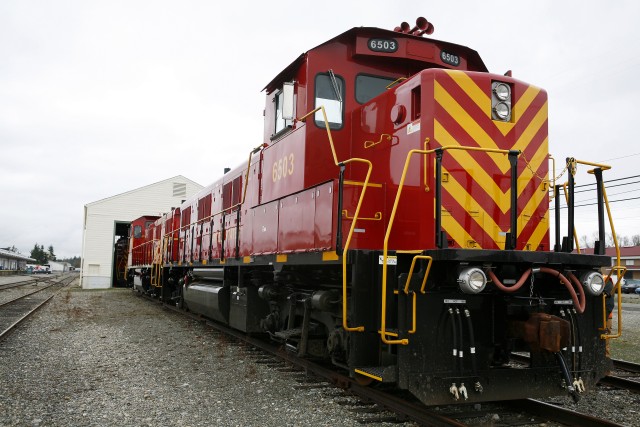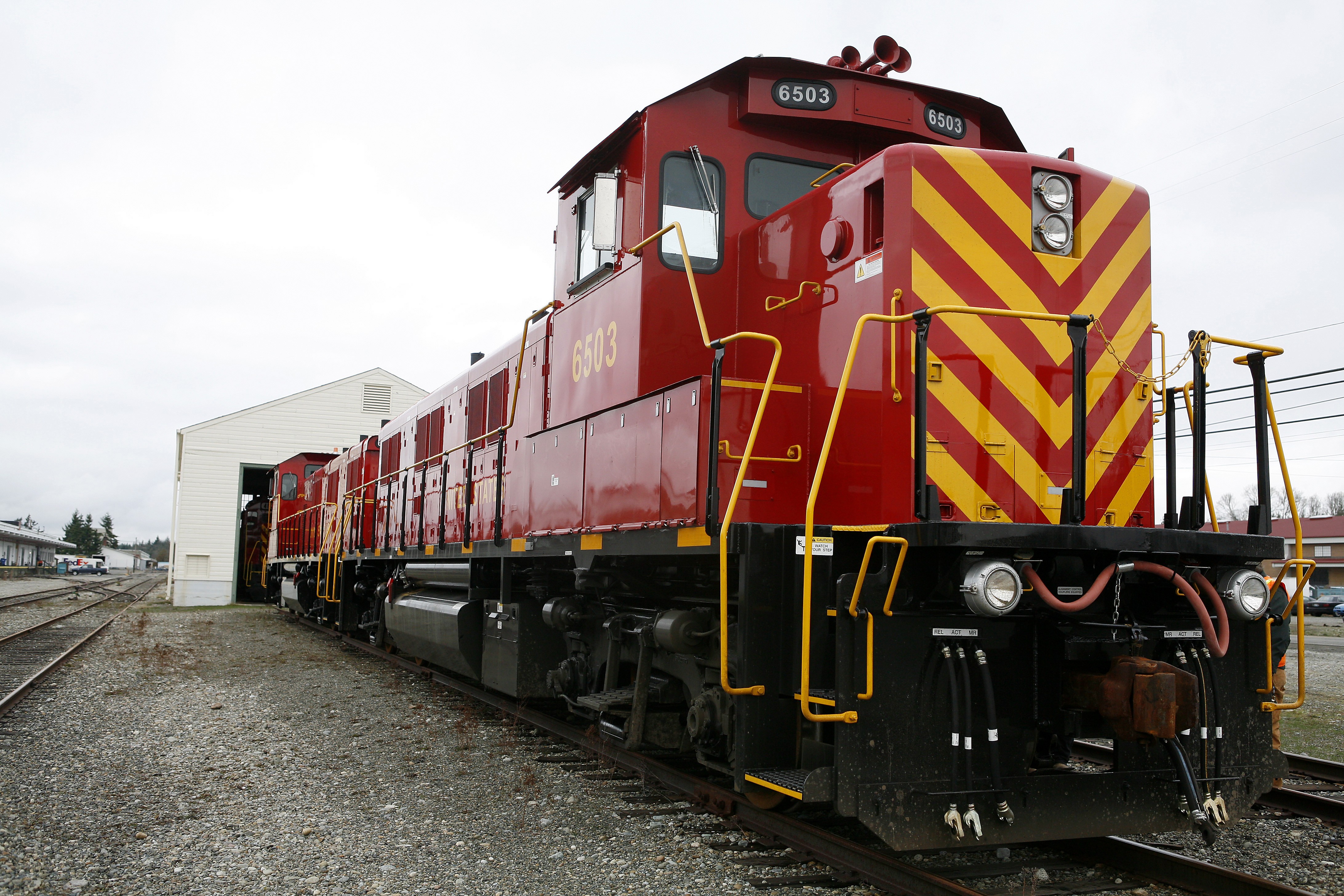FORT LEWIS, Wash. - The Army began moving equipment by rail in the 19th century.
Since then, the power source has changed from steam to diesel and electric. Fort Lewis just received two members of a clean, new generation - "ultra-low-emitting locomotives."
Manufactured by National Railway Equipment Company, the "N-Viromotive" locomotives cost $1.5 million apiece and will replace the current Fort Lewis fleet of two older diesels and one electric model. They will continue to use diesel fuel, but in a far more efficient manner.
"These new ... locomotives should provide Fort Lewis with an overall reduction in rail-related fuel usage of over 60 percent compared to our older units," said Russ Baggerly, chief of the Installation Transportation Division, "plus a nearly 80 percent reduction in emissions of nitrous gas and particulate solids. These are very, very clean-running systems."
Instead of one large, conventional power plant, the locomotives feature three computer-controlled engines.
"As the engine senses it needs more power, another one will kick on," said Pat McMullin, a Fort Lewis locomotive engineer. "And if you need more power, a third one will kick on. As you gain momentum, they start dropping off. That way you can maintain your speed."
"Each engine generates 700 horsepower," Baggerly said. "It's all computerized and automatic. It's also smart, in that it'll turn off the engine that has the most operating hours, so it keeps the hours about the same.
"In terms of ... fuel economy, each one of those can pull twice as much freight as (the older locomotives). Sixty-five percent less fuel, and I can move twice as much freight down the rail. These things really do have the grunt to move the freight we need them to move."
By substituting composite materials for steel in their construction, NREC added to the fuel economy of the new locomotives.
"The old ones are 100 percent steel," Baggerly pointed out.
According to Baggerly, the new locomotives are undergoing "maintenance and acceptance trials" now before being placed into service at about mid year. They will roll over a Fort Lewis rail system that began receiving a $15 million makeover last August that should be completed when the locomotives are ready.
"The (operational tempo) of the deployments is such that we have to be able to move cargo by rail," Baggerly said.
"We're going to essentially quadruple our rail capacity by the time this thing's done."
Bob Reinert is a reporter with Fort Lewis' Northwest Guardian.


Social Sharing